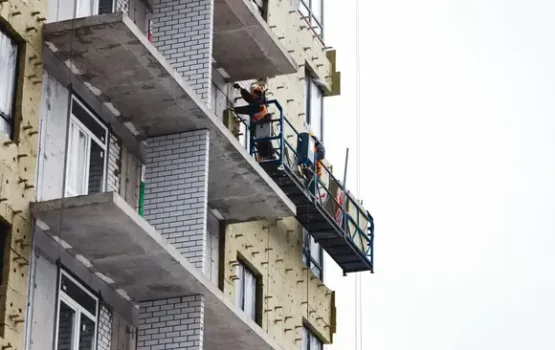A Step-by-Step Guide to Building Repairs That Protect Your Property and Ensure Long-Term Compliance
When visible issues like leaks, cracking, or concrete spalling appear in a building, they’re often symptoms of deeper structural or waterproofing problems. Addressing them properly requires more than quick fixes, it requires a structured, professional approach known as remedial building works.
This guide walks you through the full remedial construction process, from initial building defect investigation to final documentation. Whether you’re dealing with façade repair, waterproofing rectification, or general building repairs, following the correct process ensures safety, durability, and legal compliance. For property owners, strata managers, and facility teams, understanding these steps can help you avoid costly missteps and gain confidence in the outcome.
The Remedial Process at a Glance
| Step | What Happens | Why It’s Critical | Common Pitfall |
|---|---|---|---|
| 1. Initial Site Inspection | Engineers assess symptoms and apply appropriate diagnostic tools. | Ensures repairs target the actual problem. | Fixing peeling paint without addressing hidden leaks. |
| 2. Defining The Scope Of Works | Outlines repairs, materials, methodology and compliance standards. | Gives all parties a clear “playbook”. | Rushing into works without clarity leading to cost blowouts. |
| 3. Design Documentation | DBP-registered professionals prepare drawings & declarations. | Protects against liability and ensures compliance. | Skipping DBP requirements for Class 2 buildings. |
| 4. Tender Process | Prepare tender docs, invite bids, select qualified teams. | Balances cost, quality, and compliance. | Picking the cheapest quote regardless of track record. |
| 5. Construction Phase | Repairs carried out under supervision with hold-point checks. | Maintains safety, quality, and compliance. | Contractors cutting corners without oversight. |
| 6. Construction Completion and Handover | Final inspections, handover docs, maintenance guidance. | Provides compliance evidence & long-term value. | Failing to secure reports leading to risk with insurers & regulators. |
Step 1: Initial Site Inspection
The first step in any building defect investigation is understanding what’s really going on beneath the surface. You might see peeling paint or damp walls, but what’s causing it? That’s where diagnostic investigation comes in.
Engineers begin with a site inspection to identify symptoms and gather initial context. Then, they use tools like moisture mapping, thermal imaging, and material testing to trace damage back to its root cause. This may involve checking for failed membranes, cracked joints, structural weaknesses, or hidden water ingress.
Without this step, repairs often treat symptoms rather than causes. And in many cases, that leads to short-lived results. A thorough investigation ensures the remedial work is targeted, effective, and informed from day one.
Step 2: Defining the Scope of Works
Once the cause of the issue is confirmed, the next step is to translate those findings into a clearly defined scope of works. This document serves as a blueprint for all upcoming decisions.
The scope outlines which parts of the building require attention, what type of repairs will be carried out, which materials must be used, and how the work will comply with relevant codes, such as the National Construction Code (NCC) and AS 3740:2021 for waterproofing.
By locking in these details early, property owners and managers gain clarity. Everyone involved (from contractors to consultants) works from the same playbook. A well-developed scope helps prevent cost blowouts, change orders, or miscommunications down the track.
Step 3: Design Documentation
In regulated environments, particularly for Class 2 buildings, repairs must now follow a formal design and approval process in line with the Design and Building Practitioners Act (NSW). This protects property owners and residents from poorly planned or non-compliant work.
The design phase involves converting the scope into detailed drawings and specifications. These are prepared by DBP-registered professionals and often cover structural works, façade repair planning, and waterproofing remediation steps. The documentation also includes declarations required before construction begins.
For regulated buildings, this step falls under the umbrella of remedial engineering, ensuring the solutions not only meet legal obligations but are grounded in structural integrity and long-term performance. By following a defined remedial construction process, clients avoid legal risk and ensure all approvals are in place before works commence.
Step 4: Tender Process
The next priority is to find the right contractor to deliver the work. MJ Engineering Projects supports clients by preparing a professional tender package, inviting trusted contractors to quote, and comparing their proposals fairly and objectively.
The tender process isn’t just about finding the lowest price. It’s about matching the job with teams that have the right expertise, licensing, insurance, and proven track record. An impartial evaluation process ensures that key criteria, like methodology, timeline, and compliance, are factored into the decision.
By working with independent experts during this phase, you reduce the risk of engaging contractors who underquote, overpromise, or cut corners during construction.
Step 5: Construction Phase
Once approvals are in place, the physical building repairs begin. But effective execution involves more than labour, it requires careful management to ensure code compliance, minimise disruption, and maintain safety.
This is where contract administration is crucial. From staging works and coordinating access to inspecting key milestones, MJ Engineering Projects ensures that repairs, from façade remediation to waterproofing rectification, are completed to spec. Any latent issues discovered are escalated and resolved within the project scope, maintaining transparency throughout.
Oversight also helps ensure that the selected contractors stick to the approved defect rectification process, avoiding unapproved shortcuts. Especially in occupied buildings, ongoing communication with residents or facility managers ensures minimal disruption.
Step 6: Construction Completion and Handover
The final stage of any remedial building works is practical completion, where outcomes are verified and clients receive the necessary documentation. This includes final inspection reports, maintenance guidance, and compliance evidence, which are often required for insurance or legal purposes.
A well-documented close-out not only demonstrates project transparency but helps strata managers and owners stay on top of long-term maintenance. Whether the work involves building condition reports, waterproofing rectification, or façade repair, a thorough handover ensures nothing gets missed.
Common Pitfalls to Avoid
Even the most well-meaning building owners can make costly errors. Some of the most frequent issues in building repairs include:
- Starting without a proper building defect investigation.
- Engaging trades without verifying compliance or licensing.
- Skipping the required documentation for remedial engineering.
- Choosing patch jobs over full waterproofing remediation steps.
- Overlooking hold-point inspections during construction.
- Not securing post-project building condition reports.
Avoiding these missteps is just as important as doing the work itself. A professional remedial process is your best safeguard.
Final Words
Building repairs require more than short-term fixes. They demand a well-planned, compliant, and durable approach. Addressing issues like water ingress, façade deterioration, or structural defects means understanding their true causes and applying a methodical process at every stage.
By following a complete remedial construction process, you reduce the risk of rework, protect asset value, and ensure alignment with legal and engineering standards. From early building defect investigation to final reporting and maintenance guidance, each phase plays a crucial role in achieving reliable outcomes.
If your building is experiencing issues with waterproofing, structural defects, or façade deterioration, contact us to learn how we can help.


